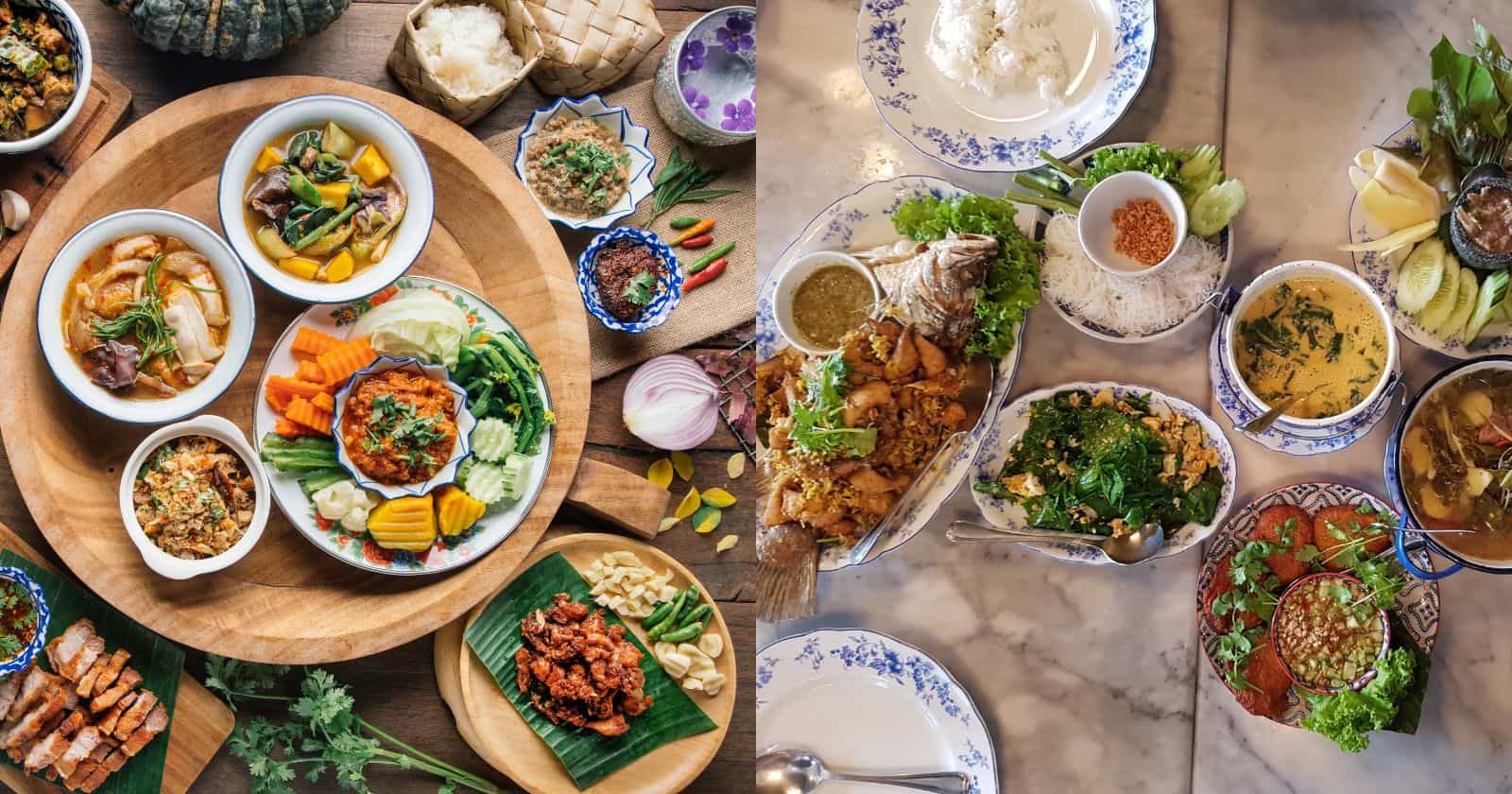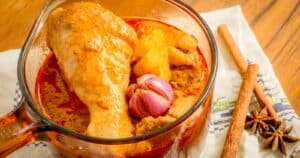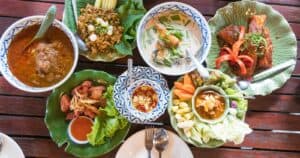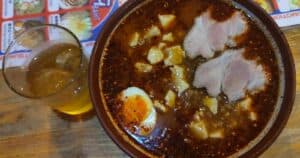Food lovers, prepare your taste buds for an exciting culinary tour of Thailand! From north to south, Thai cuisine varies dramatically between regions.
So what exactly is the difference between northern and southern Thai food?
In a nutshell, northern Thai food spotlights milder, earthier flavors with warming spices and herbs. Meanwhile, southern Thai cuisine turns up the heat with bold, chili-fired flavors.
What creates this great divide in Thai cuisine? The answer lies in each region’s unique climate, culture and customs. These distinct conditions shape the local ingredients and cooking techniques.
Let’s explore the tantalizing tastes of the north versus the fiery flavors of the south. We’ll highlight signature dishes and culinary influences from each area. By the end, you’ll have a mouthwatering understanding of northern vs. southern Thai food traditions.
Now, let’s dig into the details and discover what makes these two regional cuisines so distinct.
How Climate Shapes Northern vs Southern Thai Cuisine
Thailand’s diverse geography, from steamy jungles to misty mountains, directly impacts the local agriculture and cuisine.
- Northern Thailand has a cooler climate, with hilly terrain and valleys conducive to growing produce that thrives in temperate conditions. This shapes the ingredients and flavors used in northern cooking.
- Southern Thailand is hot and humid year-round. The tropical climate means chili peppers, coconuts and tropical fruits flourish here. These define the bolder, spicier cuisine of southern Thailand.
The Cool Hills and Valleys of Northern Thailand
- Cooler temperatures, especially in elevated northern provinces like Chiang Mai and Chiang Rai, allow for crops rarely grown in hot southern Thailand.
- Leafy greens, cabbage, tomato, eggplant and fresh herbs like cilantro, basil and mint thrive in the north.
- Fruits like lychee, longan, custard apple and star gooseberry are northern specialties.
- Spices commonly used include ginger, galangal, lemongrass, garlic, black pepper and makrut lime.
The Tropical Shores of Southern Thailand
- Southern provinces like Phuket and Krabi are hot and humid year-round with abundant rainfall.
- Local agriculture thrives on tropical produce like coconuts, banana, mangoes and durian.
- The south specializes in dried shrimp paste and spicy dipping sauces.
- Chili peppers grow in abundance, making southern Thai food notoriously spicy.
- With extensive coastlines, fresh seafood like fish, shrimp and squid are southern staples.
Cultural Influences on Northern and Southern Thai Cuisine
In addition to climate, the culinary traditions of neighboring countries have shaped the regional diversity of Thai cuisine.
Northern Thai Food Reflects Burmese and Lao Influences
- Northern Thai cuisine shares similarities with Shan State, Burma and Laos.
- Burmese influences include tea leaf salads, thick curries, and noodle dishes like oh noh khao swè.
- From Laos came larb, a spicy minced meat salad, and tam mak hung, a spicy papaya salad.
- Sticky rice and spicy dips are northern staples adapted from Lao cuisine.
Southern Thai Food Shows Malaysian and Indonesian Flair
- Southern Thai cuisine blends Thai cooking with Malaysian and Indonesian influences.
- Malaysian inspirations include massaman curry, roti flatbread and nasi lemak rice dishes.
- From Indonesia came satay skewers, spices like candlenuts and turmeric, and dishes using coconut milk.
- The south also specializes in spicy seafood curries, stir-fries and soups.
Comparing Key Differences: Northern vs Southern Thai Cuisine
Let’s recap the main factors that differentiate the two regional cuisines:
| Northern Thai Food | Southern Thai Food |
|---|---|
| Cooler climate | Hot, tropical climate |
| Abundant veggies and herbs | Abundant chili peppers |
| Milder flavors | Bolder, spicier flavors |
| Sticky rice dishes | Coconut milk dishes |
| Tea leaf salads | Seafood curries |
| Burmese and Lao influences | Malaysian and Indonesian influences |
While these generalizations help characterize the cuisine, keep in mind there are also many shared dishes like tom yum soup, pad Thai and som tam (papaya salad) found all over Thailand.
Next, we’ll explore popular northern and southern Thai dishes in more detail.
Signature Dishes of Northern Thai Cuisine
Let’s look at some iconic dishes from Northern Thailand and what makes them special.
Khao Soi
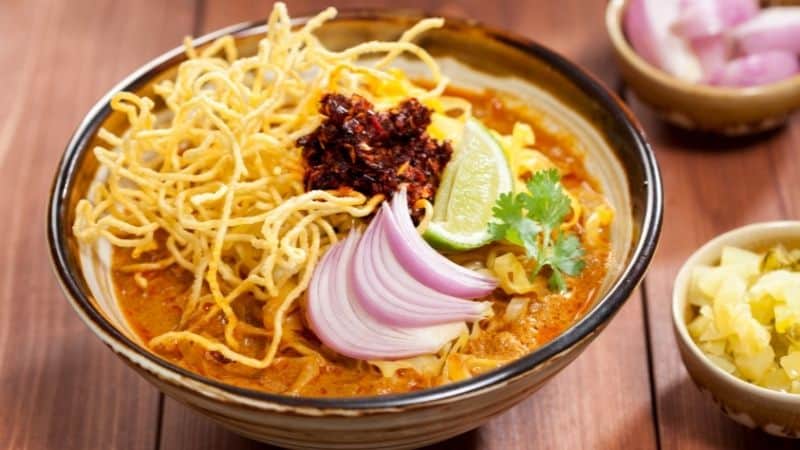
- Origin: Brought by Muslim traders from Burma
- Description: Coconut curry noodle soup with chicken, crispy noodles, onions, pickled cabbage, lime and chili oil
- Key flavors: Coconut milk, curry spices, lime juice
Sai Oua
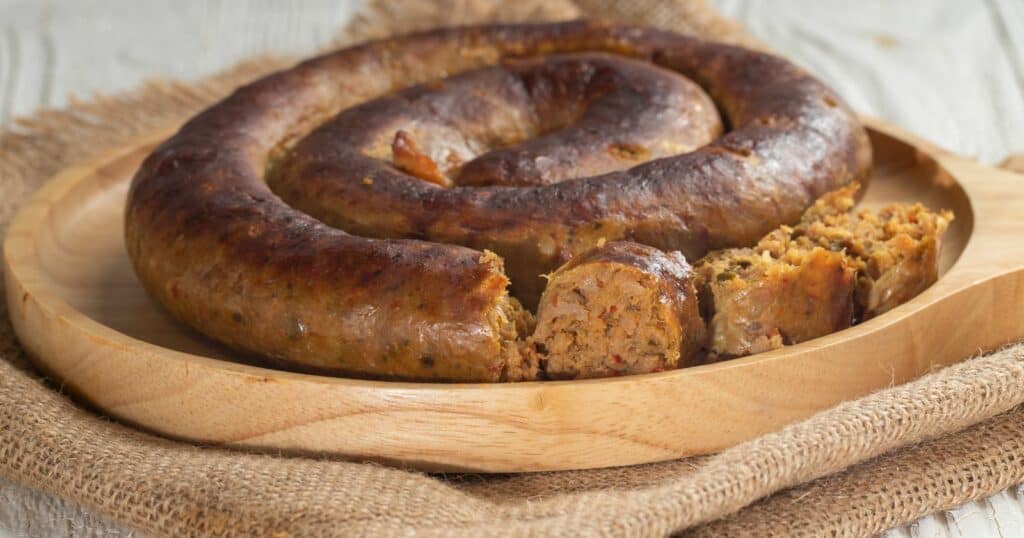
- Origin: Influenced by Lao sausage
- Description: Spicy grilled pork sausage infused with lemongrass, garlic, pepper and herbs
- Key flavors: Lemongrass, garlic, chili peppers
Nam Prik Ong
- Origin: Northern Thai dip adapted from Shan State
- Description: Pork and tomato chili dip served with raw and steamed veggies
- Key flavors: Pork, tomato, chili peppers
Gaeng Hung Lay
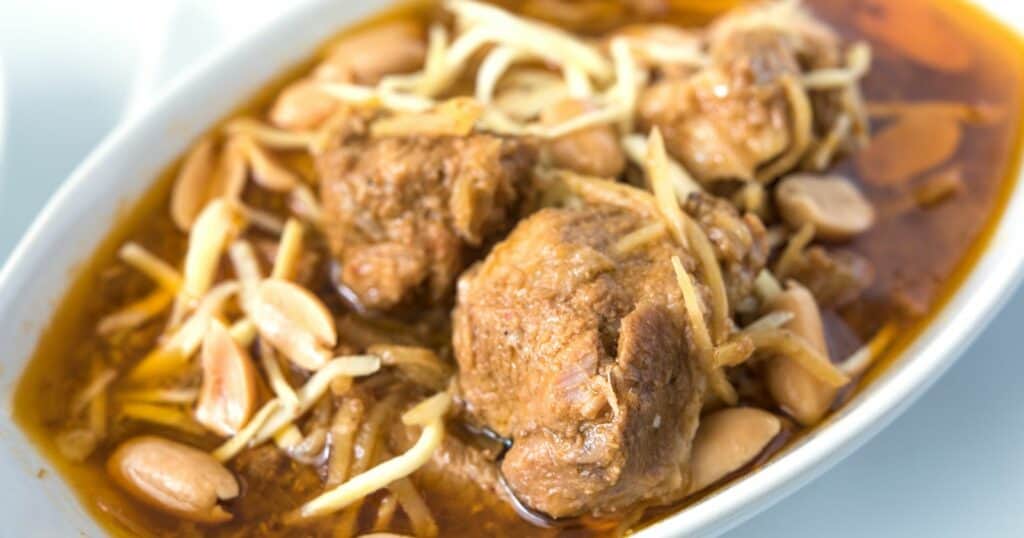
- Origin: Burmese-inspired pork curry
- Description: Slow-cooked curry with ginger, tamarind and pork belly
- Key flavors: Ginger, tamarind, pork
Iconic Dishes of Southern Thai Cuisine
Now let’s explore popular dishes hailing from the south of Thailand.
Tom Yum Goong
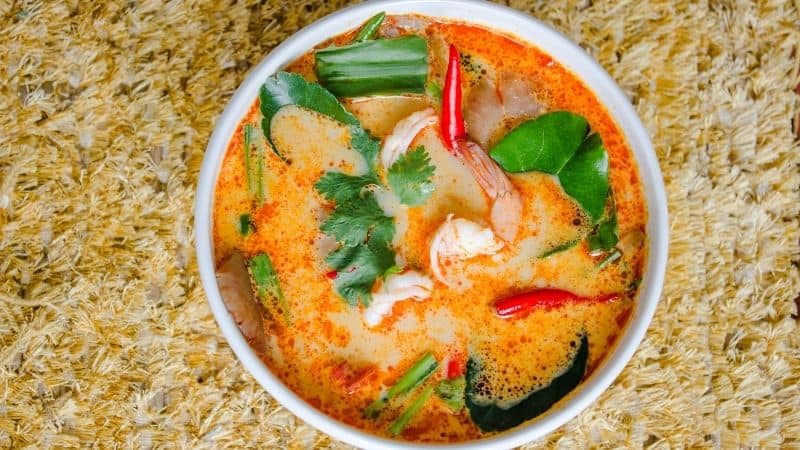
- Origin: Inspired by Indonesian spices
- Description: Hot and sour shrimp soup with lemongrass, galangal, kaffir lime leaves, mushrooms
- Key flavors: Lemongrass, lime, chili peppers
Gaeng Ped Gai
- Origin: Thai adaptation of Malaysian curry
- Description: Spicy red curry with chicken, bamboo shoots and Thai basil
- Key flavors: Red chili peppers, coconut milk
Hor Mok Talay
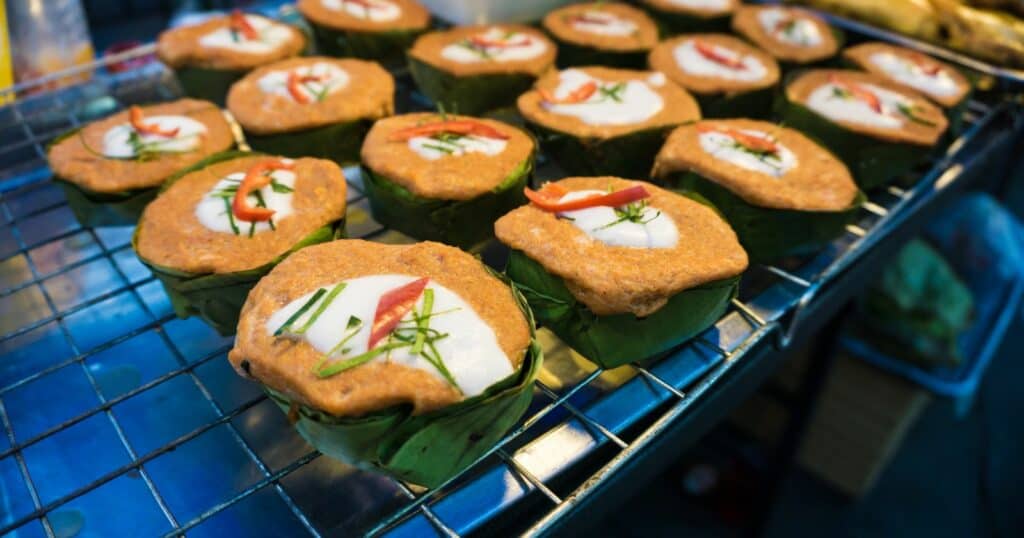
- Origin: Influenced by Malay curries
- Description: Steamed seafood curry with red curry paste, egg custard and Thai basil
- Key flavors: Red curry paste, coconut milk
Satay
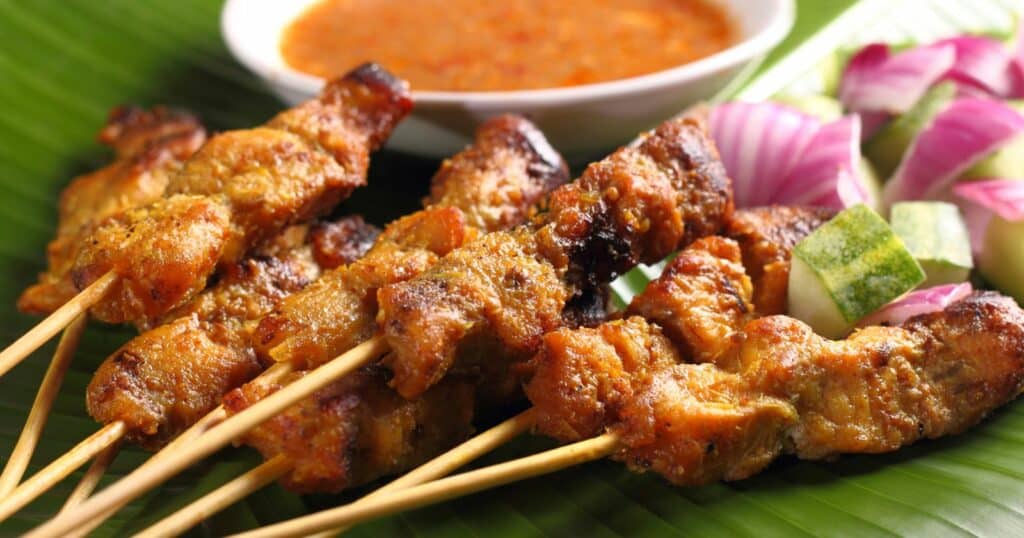
- Origin: Adapted from Indonesian satay
- Description: Skewered and grilled meat with spicy peanut sauce
- Key flavors: Peanut sauce, chili peppers
Moo Hong
- Origin: Chinese influence on Thai cuisine
- Description: braised pork belly in a garlic, soy sauce and five
spice marinade - Key flavors: Soy sauce, garlic, five
spice powder
The Distinct Flavors of Northern vs Southern Thai Curry
One dish that exemplifies the regional differences in Thai cuisine is curry. Northern and southern Thai curries have distinct ingredients, textures and flavor profiles.
Northern Thai Curries
- Tend to use a thinner, broth-like sauce instead of coconut milk
- Curry paste mixes include spices like cumin, cardamom, cinnamon and star anise
- Herbs such as dill, basil and mint add freshness
- Common proteins are chicken, pork and beef
- Kaeng hang lay is a signature northern pork belly curry
- Kaeng khae is a minced meat curry with a burst of herbal flavors
- Textures tend to be smooth rather than chunky
- Flavor profile is aromatic yet milder than southern curries
Southern Thai Curries
- Use coconut milk for a rich, creamy base
- Curry pastes rely on dried chilies, shrimp paste, lemongrass and galangal
- Herbs like Thai basil and kaffir lime leaves pack punch
- Seafood like fish, shrimp and squid are popular proteins
- Kaeng tai pla is a southern fish stomach curry with intense heat
- Kaeng som infuses tart tamarind and fiery chilies
- Chunkier texture with vegetables and meat
- Intense heat and acidity compared to northern curries
Next time you order curry in Thailand, consider choosing a northern style kaeng hang lay or a mouth-numbing southern kaeng tai pla. It’s the ideal way to experience the diverse flavors of Thai curry culture.
Experiencing Authentic Thai Flavors
We hope this overview has helped highlight the diverse flavors of northern and southern Thai cuisine. To truly appreciate the regional nuances, nothing beats tasting these dishes firsthand on a visit to Thailand.
Some key tips for seeking out authentic Thai food include:
- Head to local markets to try street food specialties like sai oua sausage and khao soi noodle soup in the north or satay skewers and spicy seafood curries in the south.
- Visit family-run restaurants off the main tourist trails. Let the menu be your guide to local specialties.
- Take a cooking class to learn signature dishes and cooking techniques from experienced Thai chefs.
- Join a food tour to discover hidden eateries and specialty regional ingredients.
- Don’t be afraid to ask for recommendations from locals for their favorite Thai foods.
Immerse yourself in the diverse flavors reflecting Thailand’s terrain, climate and blended cultures. From mild northern curries to fiery southern seafood, it’s a culinary journey you won’t soon forget!

